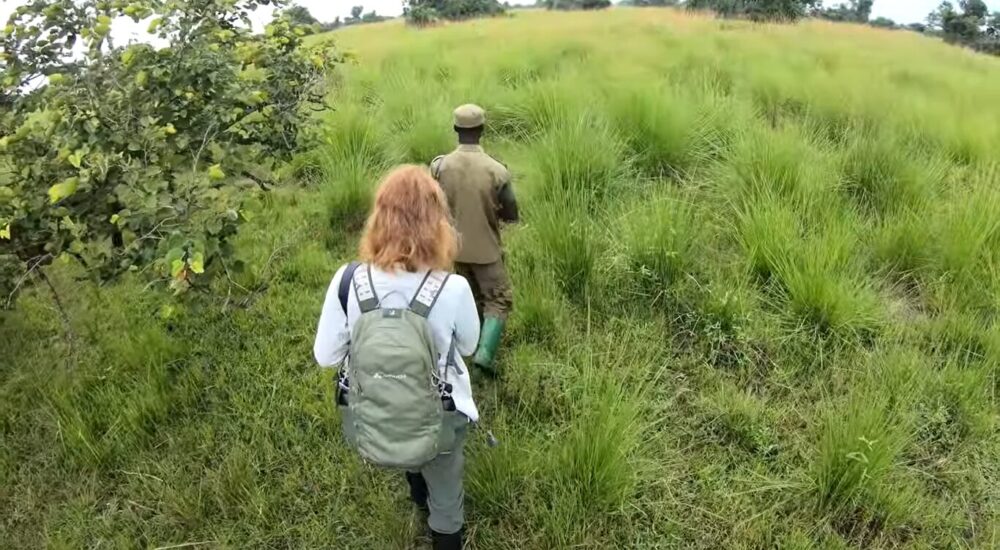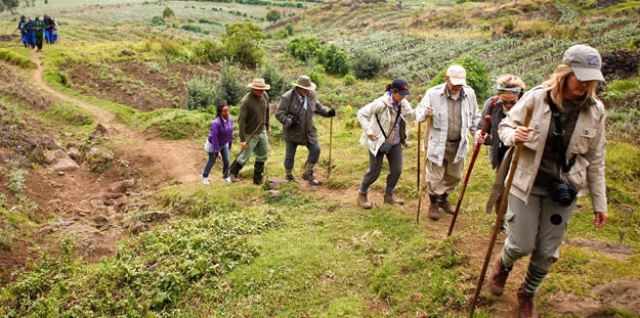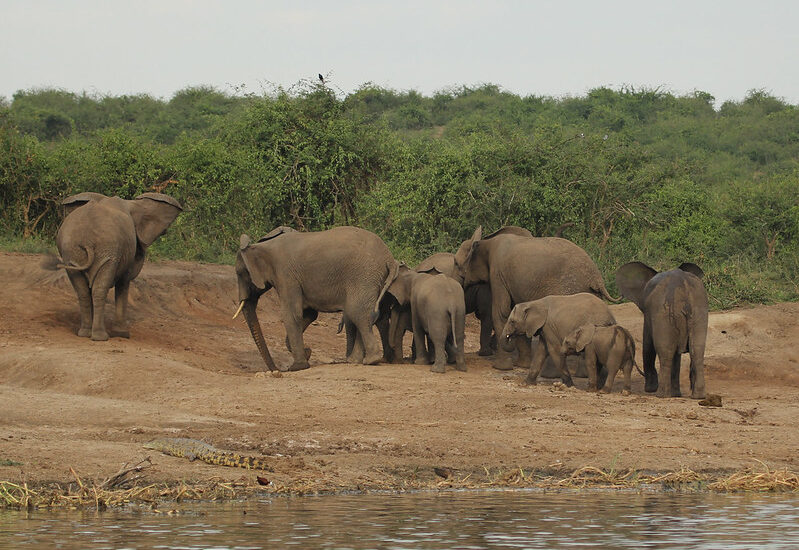Uganda, famously known as the Pearl of Africa, offers a diverse range of safari experiences,…
Best Time To Hike Mount Kilimanjaro
Best Time To Hike Mount Kilimanjaro, How to Choose the Best Time to Climb Mount Kilimanjaro. If you want to climb Africa’s tallest mountain, Kilimanjaro, the next step is to find the best time to do it, taking into account things like weather, trekking conditions, and how busy the mountain is.
You can theoretically hike up Tanzania’s Mount Kilimanjaro at any time of the year, but there are months when it gets colder, rains more, and there may be a lot of snow at the top.
We usually suggest that people climb Kilimanjaro between December and mid-March and between mid-June and the end of October, when it is hottest and driest.
People say that these months are the best for climbing because the weather is nice, but they also tend to be the busiest.
This guide talks about the best times to climb, when it’s not as busy, and when you should avoid going. We’ll also talk about some other important things that will help you choose the best time for your Kilimanjaro trip.
Going up Kilimanjaro in January and February
Going up Kilimanjaro in March, April, and May
June climb of Kilimanjaro
In July, August, September, and October, people climb Kilimanjaro.
November climb of Kilimanjaro
December climb of Kilimanjaro
Going up Kilimanjaro when the moon is full
Extra Things to Think About for Your Kilimanjaro Trek
Which months are the best for hiking Mount Kilimanjaro?
Many hikers come to Mount Kilimanjaro hoping to start a big adventure in the wild on the world’s tallest mountain that stands alone. They at least expect some peace and quiet to think about the hardest physical challenge they may ever face. But when they find a show instead of solitude, it can be a huge letdown. To find the best time for your trip, you should look at the calendar month by month.
Besides this, you should also think about what else you want to do on your trip. This is especially true if you want to climb Mount Kilimanjaro but haven’t decided when yet. These things will be different for each person. However, you should carefully think about the weather and how well you can handle it.
When is the best time to hike Mount Kilimanjaro each month? January through March:
From January to March, the mountain has average weather and little rain. During these months, it’s warm enough to walk. There isn’t a lot of rain right now, but it’s dry enough for a safe and fun hike. This time of year has beautiful views because the sky is clear and sunny. It might rain all day, but the showers are typically short and warm. These months are great for hiking Mount Kilimanjaro if you remember to bring rain gear.
At the end of March, April, and May:
The long rainy season lasts from the end of March to May. Unless you are a very skilled hiker, you should not attempt to climb Kilimanjaro during this time. Even though it’s cloudy, you’ll have the mountain almost all to yourself since not many walkers are bold enough to go at this time. If you can’t see anything, I don’t think that’s such a great deal. In addition, the trail gets very wet in the lower elevation zones. A lot of guides won’t even offer to take you on the trip at this point. So, these months are not the best times to hike up Kilimanjaro.
From June to October:
The weather and the amount of rain stop changing around this time, and the paths begin to dry out. From the middle of June to October, it gets cold, so if you like the fresh air, this might be the best time for you. In particular, September is the best month to climb Kilimanjaro because of the warm weather. September is also the driest month in the area. It’s very dry right now, so you won’t have to worry about rain.
WHAT TIME IS BEST TO HACK Mt. Kilimanjaro?It is also the busiest time to climb Mount Kilimanjaro, especially on the Marangu and Machame routes, from the middle of June to the end of October. This is because many people in North America and Europe are on holiday during this time. For the trekkers, this means they can hike in big groups and talk to each other, which makes the trip more fun. Some of the best times to hike Mount Kilimanjaro are in these months.
From November to December:
Tanzania has a short wet season that lasts from early November to early December. Kilimanjaro only has a short wet season, with lots of short afternoon rains. This is not a good time to climb. At times, it rains in the afternoon, but most mornings and nights will have clear skies. Right now might not be the best time to hike Mount Kilimanjaro because it’s damp, dirty, and slippery.
Going up Kilimanjaro when the moon is full
When you climb Mount Kilimanjaro at full moon, you’ll see something truly amazing. The bright moonlight shines on the glaciers, making the scenery look beautiful and almost magical. One of the best things about hiking at this time of year is that the moonlight makes it easier to see, especially on the last few steps up to Uhuru Peak.
Yes, you can enjoy the benefits of the moonlight even if you don’t reach the summit on the exact date of the full moon. However, many hikers try to reach the summit during the full moon for an even more memorable experience.
This is how you should plan your climb: start a seven-day climb five days before the full moon, or start an eight-day climb six days before. Because these dates are so popular, you should book your trip early because there are only so many hikers who can be on the mountain at once.
If you want a more peaceful and quiet hike, you might want to avoid the full moon time altogether. On top of that, this will let you enjoy a sky full of bright stars.
How to Climb Mount Kilimanjaro: When Is the Best Time to Hike Mount Kilimanjaro?
There are several ways to get to the top of Kilimanjaro from Uhuru Point. They finally meet up to form a single path to the top, but each one is very different.
The Machame Path: The Machame Route is famous because, even though it takes seven days, it has a high summit success rate of 60%. This means that 60% of climbers will make it to the top, thanks to the extra time to get used to the alpine environment. The route, on the other hand, is very hard.
There are two popular routes in Kenya. The Machame Route is called the “Whiskey Route,” and the Marangu Route is called the “Coca-Cola Route” because it is so easy to get to. The path is shorter and not as steep. The success rate is lower, though, because it’s not very long. You can also sleep in huts instead of tents on this path.
The Lemosho Trail: The Lemosho Route is longer (up to 10 days), but it’s easier for people who haven’t done much hiking before. The views are just as beautiful as on the Machame Route. The trail is less busy, so it’s quieter. The Lemosho Route is not the best choice if you are short on time, though.
The only way to get there from Kenya is through the Rongai Path. Ascending Rongai can be done quickly or slowly, and there are chances to see animals like elephants and cows. It will take you 6 to 8 days to finish this walk.
How the weather and climate change on Mount Kilimanjaro
Which months are the best for hiking Mount Kilimanjaro?
Kilimanjaro’s weather will go from very hot to very cold because the range is so big. Depending on your route and sometimes because of big changes in the mountain’s weather, you’ll think you’ve been from the equator to Antarctica in no time! This is because on the way to the top, you go through a lot of different biological zones. Kilimanjaro is split into five main biological zones, which are spaced out about 1000 meters apart. As you go up in elevation, it rains and gets warmer.
For example, the lower hills are called the Cultivation Zone because they are used for farming, like growing coffee and bananas. When it rains, water from the rain may flow into this zone and form rivers.
As you go up, you’ll reach the lowland Rainforest Zone (1,800m–2,800m), which is thick and full of animals like monkeys and antelopes. This zone offers good shade from the hot sun when the temperature is high.
The Heath zone (2,800m–3,400m) and the Moorland zone (3,400m–4,000m) are the next zones after the rainforest zone. They have less greenery and the temperature starts to drop. Next is the Alpine Desert Zone, which is dry and cold and ranges from 4,000m to 5,000m. Finally, there is the Arctic Summit Zone, which is at least 5,000m high. The top is more empty and rocky, but when the sky is clear, you can see everything.
The Arctic Summit zone has more extreme and cold weather. Temperatures drop below freezing (as low as -20 degrees Celsius) all year, and bad weather happens more often. It will help you get ready for a comfortable hike if you know what to expect in each of these temperature zones.
Be careful and stay safe When Making Plans to Hike to Mount Kilimanjaro
It wouldn’t make sense to talk about climbing Kilimanjaro without talking about safety and the state of the trails, since this is Africa’s biggest mountain.
If you have never climbed Kilimanjaro before, you should wait until the dry season. If you’ve never been in this kind of area before, the muddy and slippery trails will be hard to get through. During the last climb, you’ll feel less stressed and more at ease.
Hire a tour guide you can trust. Kilimanjaro guides will never put you in danger because they care about your safety. Don’t forget that the best guides have done this a hundred times! Your guides will keep a close eye on the weather report and anything else that could be dangerous. Do some preliminary study to get ready.
Try to reach the top at night. Most guides say that you should try to reach the seven-hour peak just after midnight so that you can be there when the sun comes up. Also, it’s easier to climb the mountain when the rocky road is still frozen, and you’ll have all day to get back to the valley. Yes, it’s hard to think about climbing at midnight, but that’s the best way to do it! The best time to hike Mount Kilimanjaro is at night.
What You Need to Bring on a Hike to Mount Kilimanjaro
Planning and packing for a hike up Mount Kilimanjaro takes a lot of work. For a good and comfortable trek, you need to bring the right gear and clothes. To make sure you have everything you need for your Kilimanjaro trip, here is a complete packing list:
Base layers of clothing: thermal tops and pants that wick away moisture to keep you warm and dry.
For warmth, wear a fleece or soft-shell jacket and pants in the middle layers.
Outside Layers: A jacket and pants that are waterproof and windproof to keep you dry in the rain and wind.
Hiking pants and shorts are choices for different weather because they are light and dry quickly.
Shirts with long sleeves and T-shirts: materials that wick away sweat.
Warm hat and gloves: To keep your hands and head warm, wear insulated gloves and a beanie or mask.
Sunglasses and a hat to protect your eyes from the strong sun at high elevations.
Gaiters: They keep dirt and snow out of your boots and keep them clean.
Socks: Hiking socks that dry quickly and well and wool socks for colder days.
Underwear that wicks away moisture and dries quickly.
Hiking boots are strong, waterproof, well-worn-in boots that give your ankles good support.
Camp Shoes: Sandals or shoes that are light enough to wear while relaxing at camp.
Gear Backpack: A sturdy daypack (30–40 liters) with a rain cover for bringing the things you need during the day.
Duffel Bag: A strong, waterproof duffel bag (70 to 90 liters) that workers can use to carry your stuff.
A sleeping bag is a four-season sleeping bag that can keep you warm in weather below zero.
The sleeping pad adds extra warmth and comfort.
Trekking sticks: Strong sticks that can be adjusted to help you stay balanced and keep your knees from hurting.
Your headlamp should have extra batteries for night hikes and use around camp.
Water Bottles and Hydration System: To stay hydrated, the system has insulated water bottles and a bag.
Tablets for Cleaning Water: These are used to clean water from streams.
Eat snacks and energy bars. Snacks high in calories to give you energy during the hike.
Other Things
specific First Aid Kit: This should have painkillers, blister care, medicine for altitude sickness, and any specific prescriptions.
Soap that breaks down naturally, a toothbrush and toothpaste, hand sanitizer, wet wipes, and toilet paper. Wear sunscreen and lip balm with a high SPF to stay safe in the sun.
To keep mosquitoes and other bugs away, use insect repellent.
Knife or multi-tool: For any fixes or needs that come up out of the blue.
Camera: To record the beautiful views.
To keep your gadgets charged, you can use a portable charger or power bank.
Things you’ll need for travel: a passport, a visa (if needed), travel insurance, and any permits.
Cash: For gifts, tips, and anything else you need.
Choice Items
Earplugs: These keep noise out at camp.
Warmers for your hands and feet: These keep you warmer when it’s really cold outside.
A diary or journal is a way to keep track of your trip.
Book or e-reader: To pass the time when you have some free time.
Last Words
The key is layering: Kilimanjaro has a very changing climate, so be ready to add and remove layers as required.
Porters can only carry a certain amount of weight, so only bring what you need and don’t bring too much.
Check out your gear: Make sure your boots, backpack, and other gear are comfy and broken in before the hike.
If you pack smart and are well-prepared, you’ll be ready to face Kilimanjaro’s varied and difficult situations with confidence.


